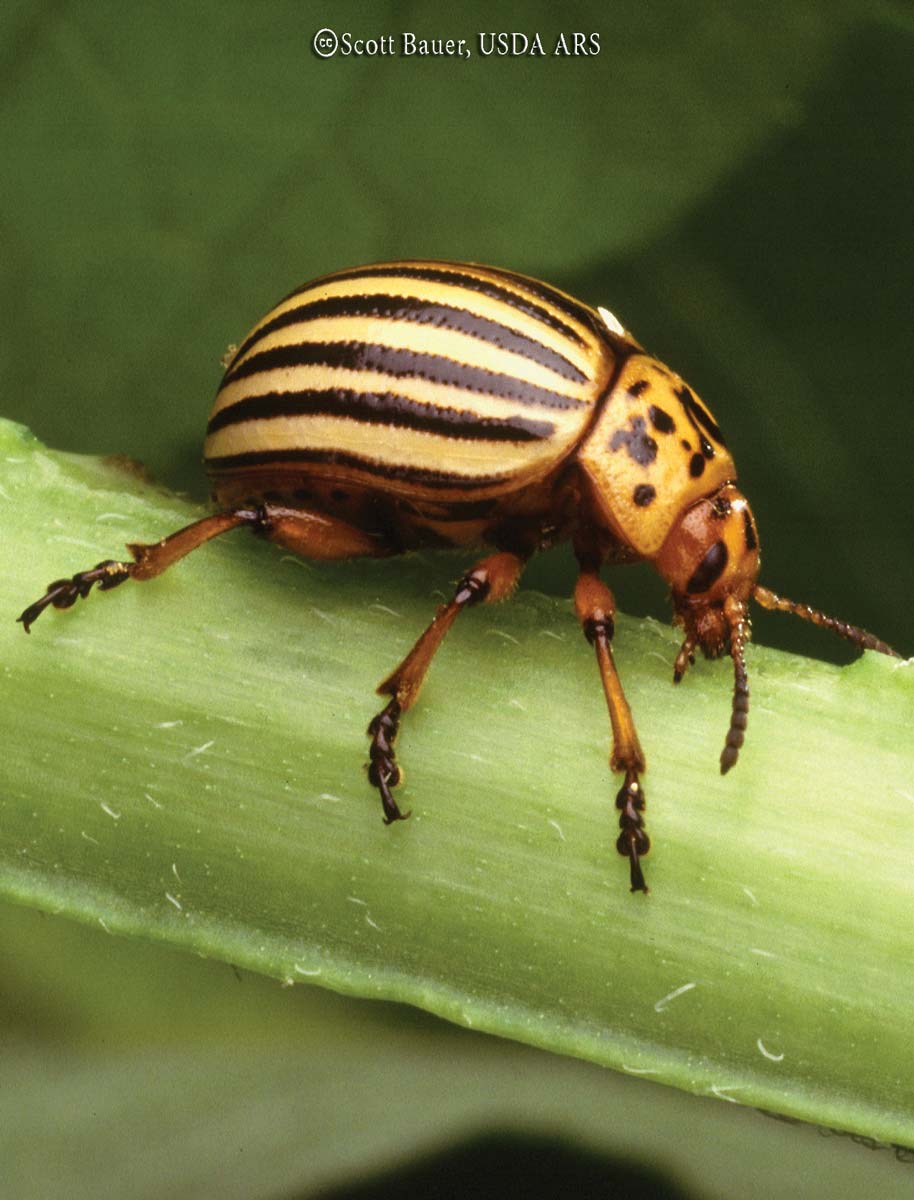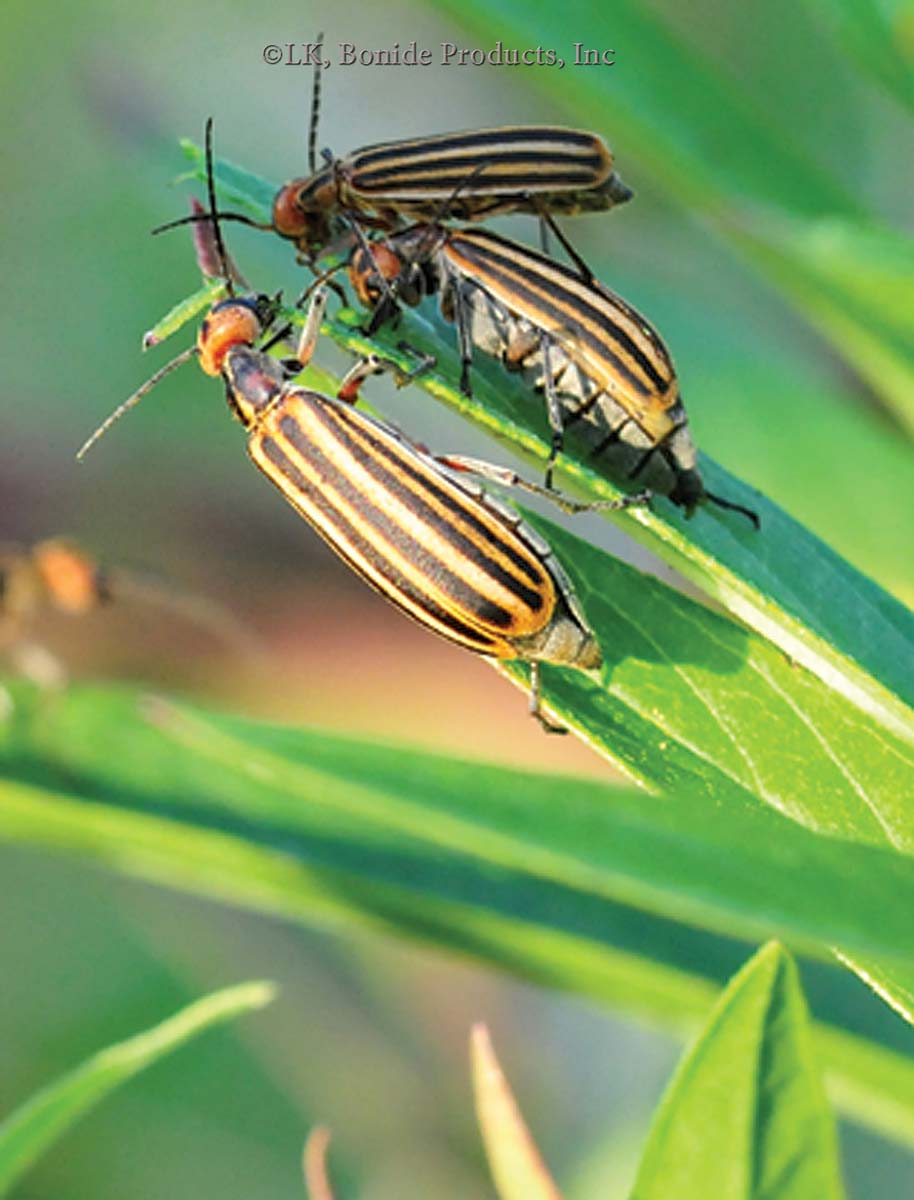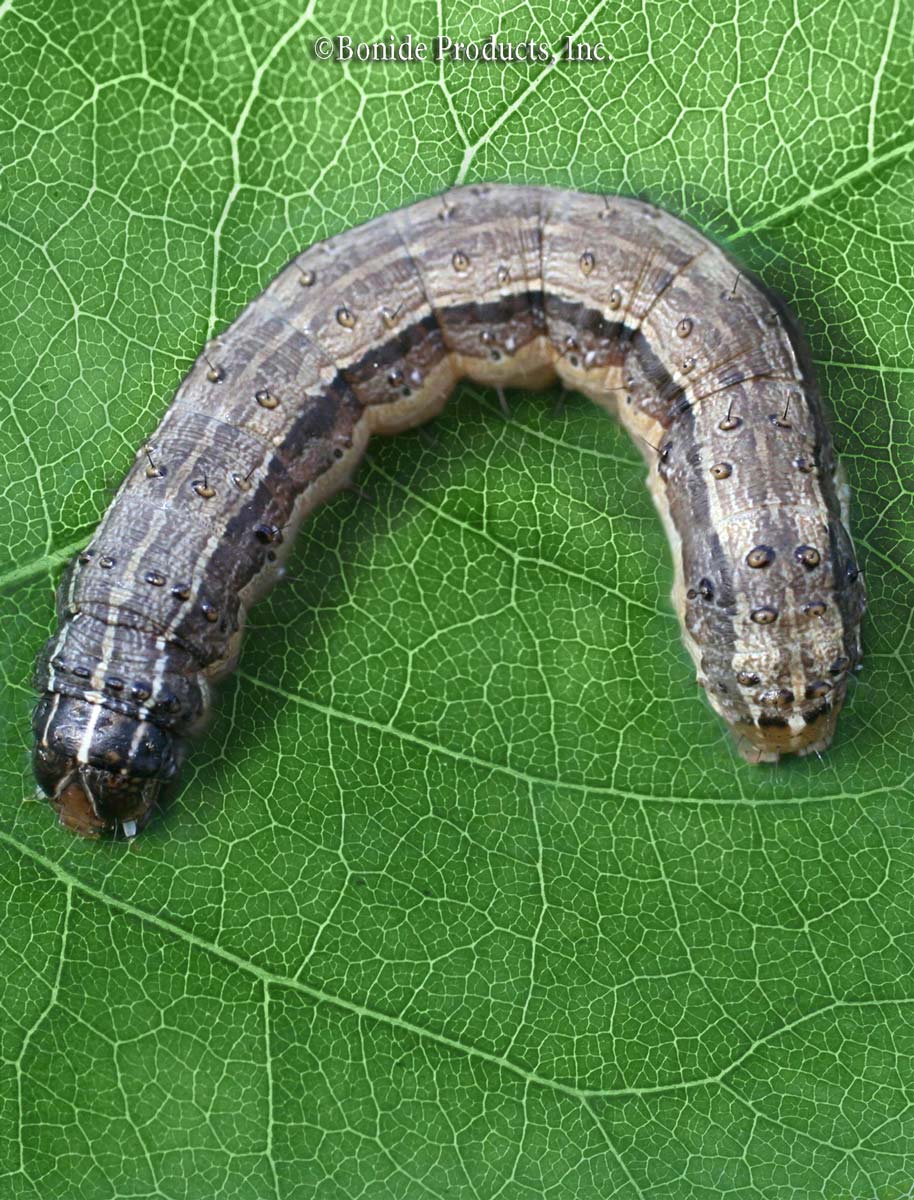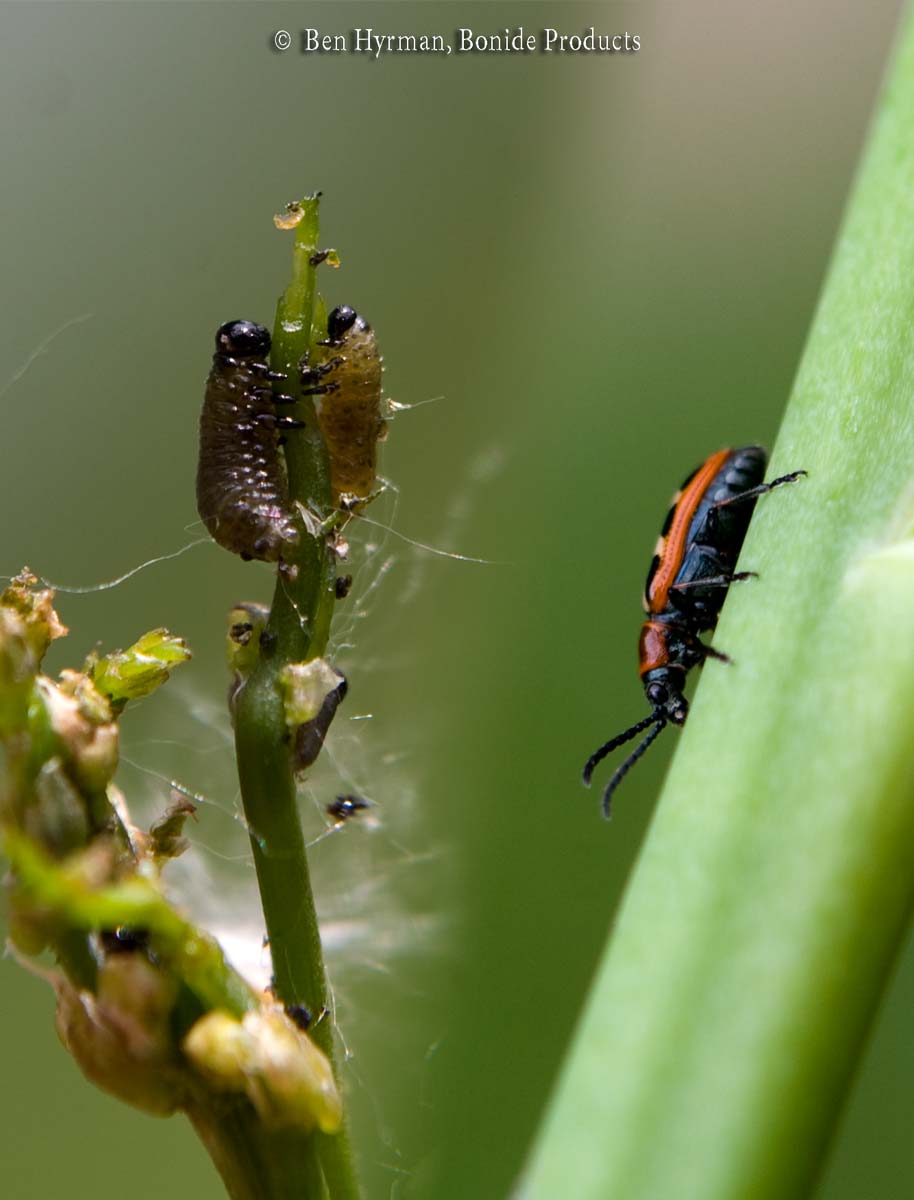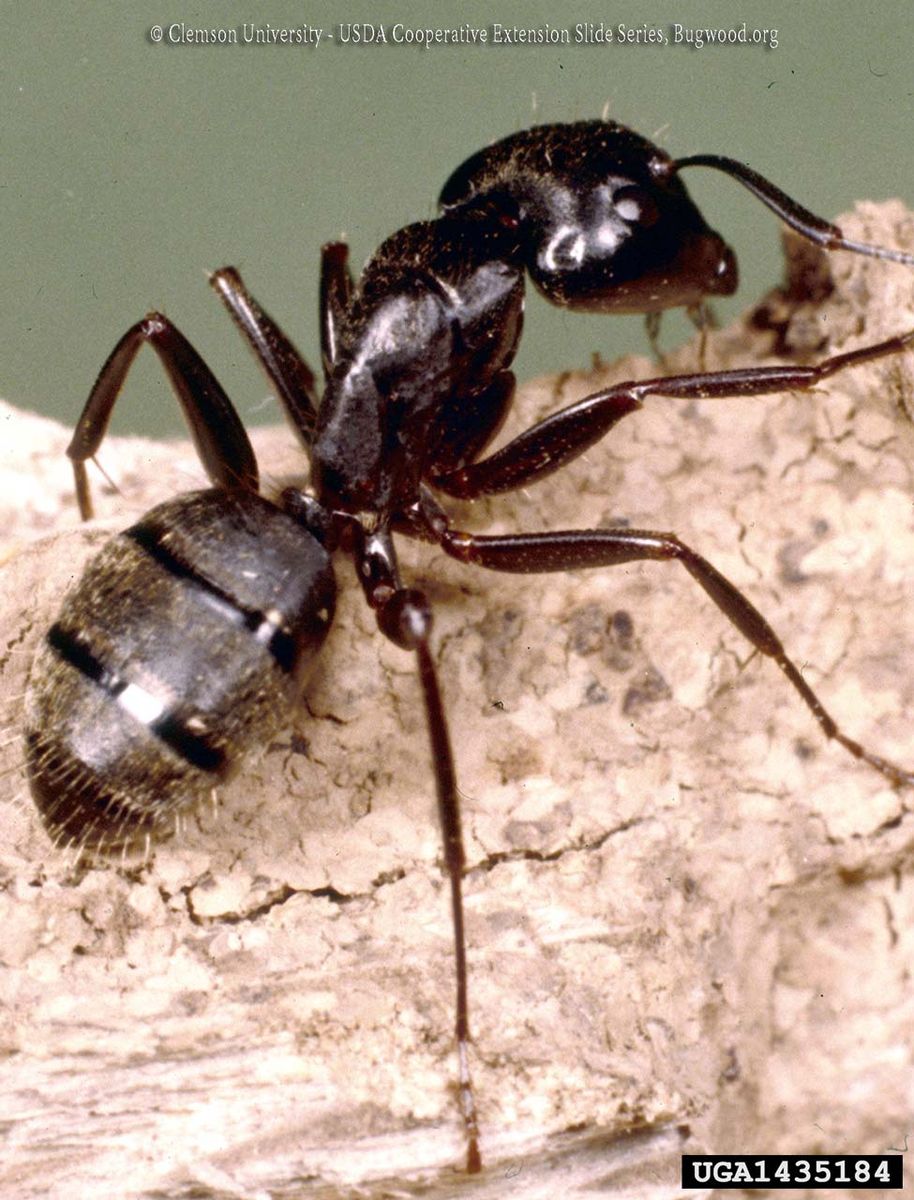Colorado Potato Beetle
Though native to the Rocky Mountains, this pest long ago spread to all other parts of the United States except California and Nevada. The 3/8-inch long adult beetle is easy to spot: the showy polka-dot vest and striped pants are dead giveaways. The small, red-humped nymphs have articulated legs and rows of dark spots along … Read more
